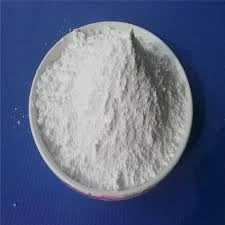Chemicals Used to Treat Low pH Levels
Low pH levels in various environments can pose significant challenges, particularly in agricultural settings and water treatment facilities. A low pH indicates acidity, which can harm plant growth, aquatic life, and the efficiency of chemical processes. Thus, effective treatments are necessary to neutralize acidity and restore optimal pH levels. Several chemicals are commonly used for this purpose.
One of the most widely employed chemicals for raising pH levels is calcium carbonate, commonly known as lime. When applied to acidic soils, calcium carbonate reacts with acids, effectively neutralizing them while improving soil structure and fertility. This process not only raises the pH but also adds essential calcium to the soil, promoting healthy plant growth. In situations involving water treatment, calcium carbonate is used to precipitate excess hardness and can help control pH in drinking water supplies.
Another effective chemical for treating low pH levels is sodium bicarbonate, or baking soda. Sodium bicarbonate is often utilized in aquaculture and swimming pools to elevate pH levels without causing rapid fluctuations. Its gentle properties make it ideal for sensitive environments, where abrupt changes can stress aquatic life or disrupt recreational activities.
what chemicals are used to treat low ph levels

Sodium hydroxide, also known as lye, is another powerful agent for increasing pH. This strong base is often used in industrial applications and large-scale water treatment plants. However, care must be taken when using sodium hydroxide, as its reaction with water can produce heat and release significant amounts of hydroxide ions, potentially leading to overcorrection if not managed properly.
Potassium carbonate is another alkalizing agent that can be effective in managing low pH levels, particularly in agricultural contexts. Like calcium carbonate, it not only raises pH but also provides potassium, which is an essential nutrient for plant growth.
For more controlled environments, such as laboratories, buffer solutions can be employed to maintain pH at a stable level. These solutions resist changes in pH upon the addition of acids or bases, making them ideal for scientific experiments and processes requiring precise pH levels.
In conclusion, managing low pH levels is crucial for maintaining healthy ecosystems and effective agricultural practices. Chemicals such as calcium carbonate, sodium bicarbonate, sodium hydroxide, and potassium carbonate play significant roles in neutralizing acidity and promoting balanced pH levels. Choosing the right chemical often depends on the specific context, desired outcomes, and sensitivity of the environment in question.

